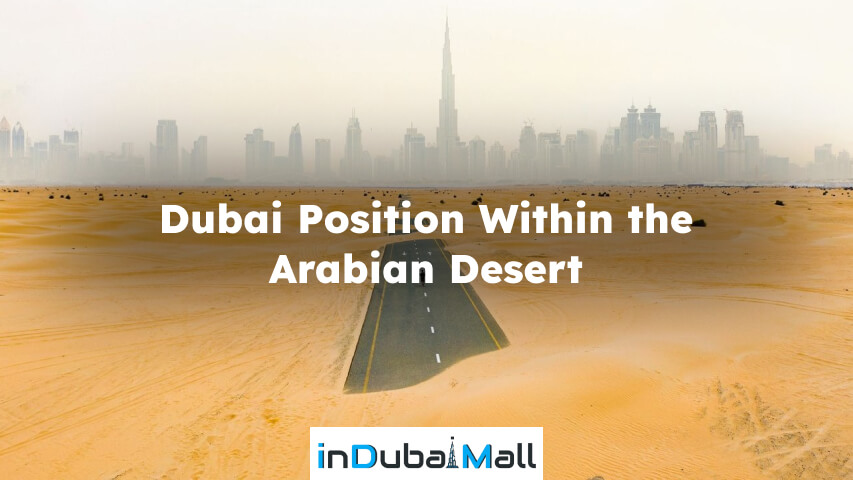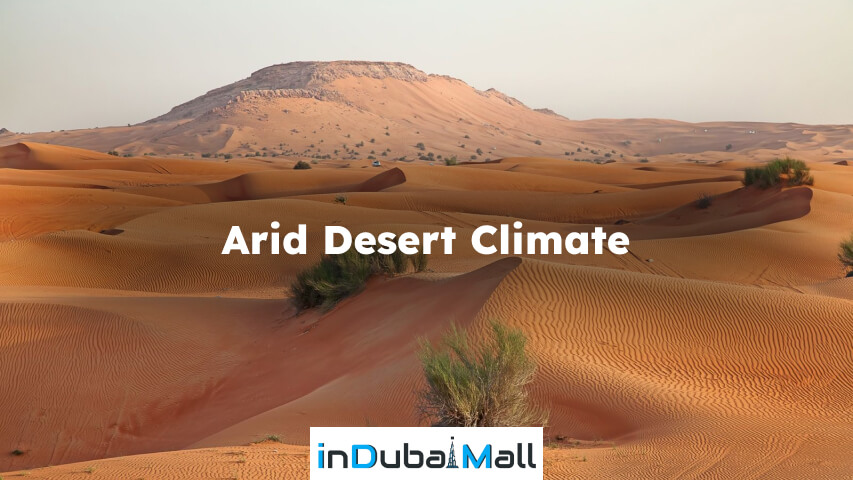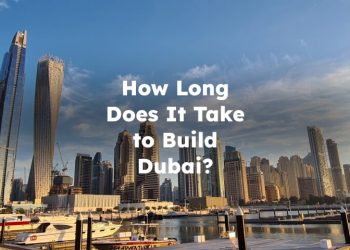Is Dubai in a Desert or it is a shiny modern city? When people think of Dubai, they often imagine its famous skyline, speedy cars, and high-end malls. However, many are unaware that Dubai is situated in the middle of the desert, a shining city that emerged from the sand. In essence, Dubai represents a blend of modernity and nature, featuring cutting-edge buildings alongside expansive orange dunes. If you’re considering a visit to Dubai, let’s discuss what you can anticipate in this blog on Indubaimall.
Dubai Position Within the Arabian Desert
Where is Dubai in which country? Dubai is a city in the UAE located in the Middle East. It is highly modernized and home to the tallest building in the world. Is Dubai in a desert? Is the sea in Dubai real? Situated on the coast, Dubai is bordered by the Persian Gulf, which surrounds part of the city, and the vast Arabian Desert, which stretches from Oman to Iraq. It is situated between Abu Dhabi and Sharjah and is easy to reach by road from other major UAE cities. Dubai’s location links the West and East, making it a key spot for business and tourism. Dubai International Airport (DXB) is among the busiest in the world, with flights arriving from nearly everywhere.

Climate Characteristics of Dubai
Dubai has a subtropical desert climate, featuring mild winters and extremely hot summers. The summer heat can feel oppressive due to high temperatures and humidity, with winds from the Persian Gulf adding moisture. Windy conditions are common from shamal, especially in winter and spring, but can also occur in summer, sometimes causing sand and dust storms. Dubai also enjoys from abundant sunshine, averaging over 3500 hours of sunlight per year.
Arid Desert Climate
Dubai has a dry desert climate with two main seasons that are winter and summer, separated by two transitional periods. Winter lasts from December to March, with average temperatures between 16.4°C and 24°C. The first transitional period, from April to May, sees temperatures gradually rising from 26°C to 33.5°C. Summer, from June to September, can reach extreme highs of up to 50°C, especially in the south, with average temperatures between 32°C and 37.2°C. Rainfall is low, particularly near the coast. The second transitional period of rain in Dubai, from October to November, has average temperatures from 24°C to 30°C.

Temperature Variations Between City and Desert
You might think the Dubai desert is hotter than the city in the late afternoon, but that’s not true. Many people don’t know that it’s possible to visit Dubai in summer, and in the late afternoons, the desert can actually be cooler than the city! About two hours before sunset, the temperature in the desert drops quickly – it can be 7 to 10 degrees cooler than the city and the coast. This happens mainly because of the sand. The sand has little moisture, which makes the desert cool quickly in the late afternoon and evening. Therefore, visiting the desert in the late afternoon during summer is a great activity when in Dubai. It is a famous desert in Dubai.
Urban Development Amidst the Desert
Dubai has changed remarkably over the years, evolving from a desert into a lively city. It is known for business and luxury. In the second half of the 20th century, Dubai started to grow rapidly. Leaders like Sheikh Rashid bin Saeed Al Maktoum had a vision that helped change Dubai. They saw that depending on old industries was not enough, so Dubai began a bold plan to diversify and become a major player in finance, tourism, real estate, and logistics. The Dubai real estate market has changed significantly, growing from a small fishing village to a major center for luxury and modern architecture. Here are some factors that cause urban development of Dubai amidst the desert that are the reasons of Dubai population to be increased:
- Dubai’s central location connects Europe, Asia, and Africa, making it a key center for global trade and attracting businesses and expatriates worldwide.
- The government is focused on diversifying the economy beyond oil, leading to growth in tourism, trade, and technology, which opens new opportunities for real estate investors.
- Dubai has introduced policies that favor investors, including allowing foreign ownership of property and offering long-term residency visas for property buyers.
- Dubai’s real estate sector presents compelling rental returns, with certain regions yielding between 5-8% annually, while investors can anticipate substantial capital growth over time.
- The introduction of freehold property ownership by the government in 2002 catalyzed a wave of real estate development and a swift increase in property values.
- The adoption of advanced technologies is transforming Dubai’s real estate environment, with the rise of smart homes, blockchain applications in property transactions, and virtual reality tours becoming commonplace.



















